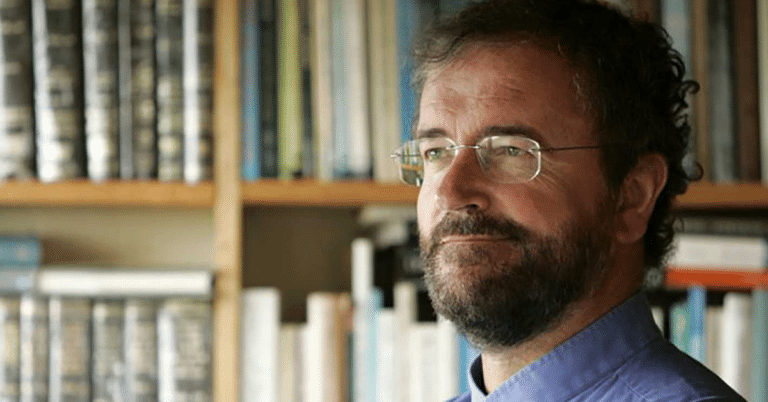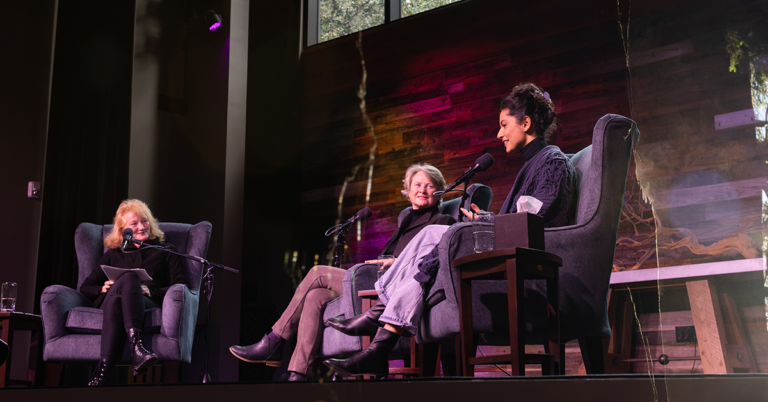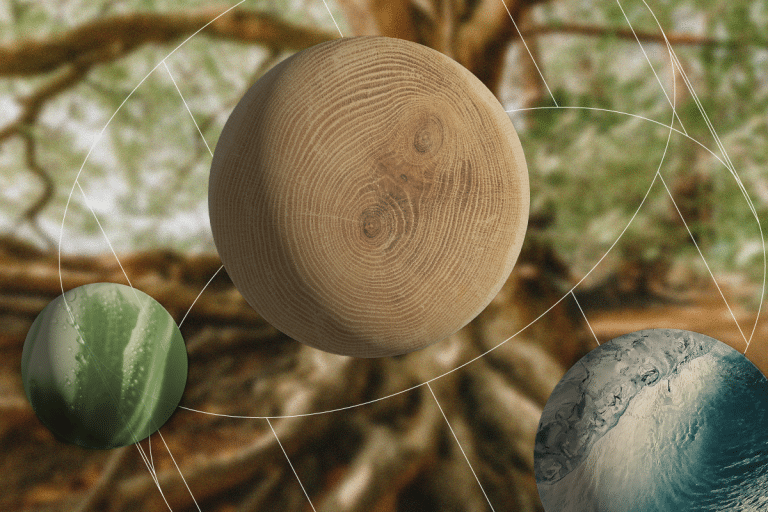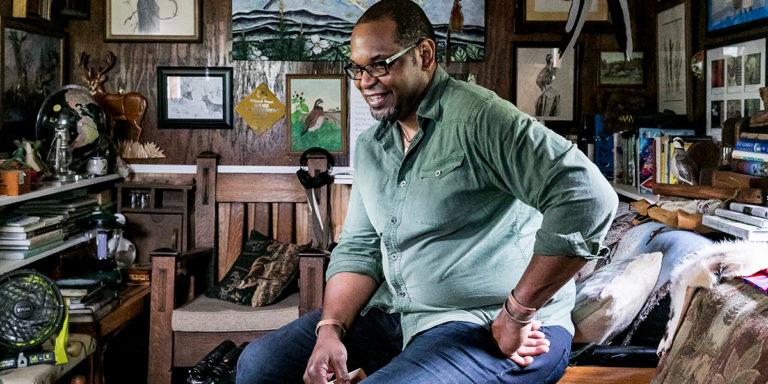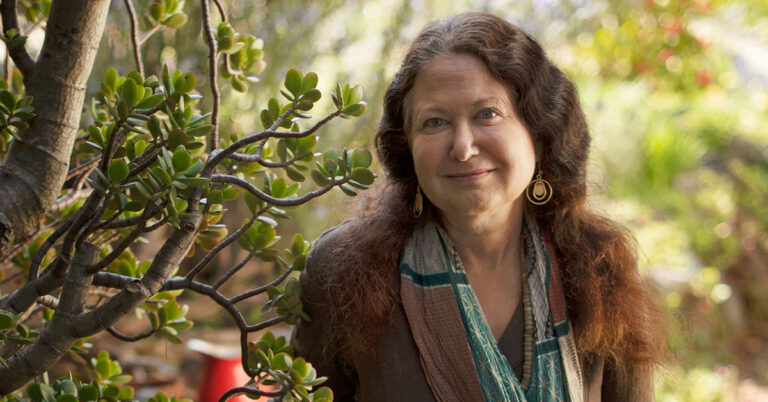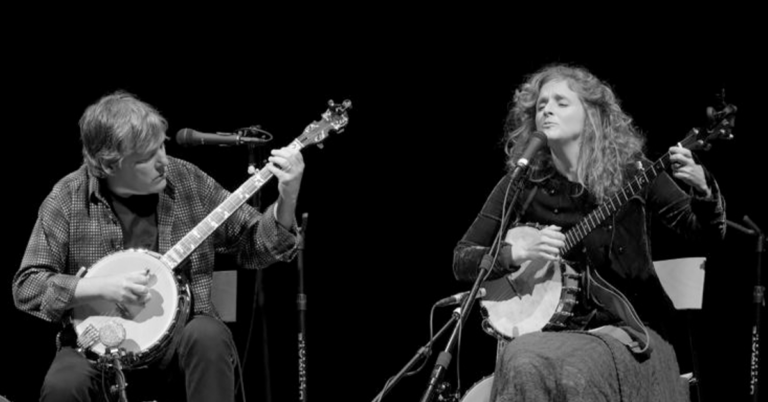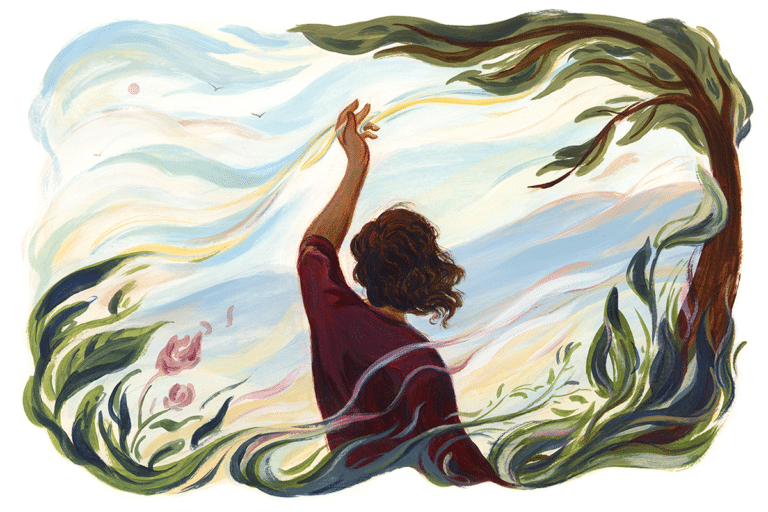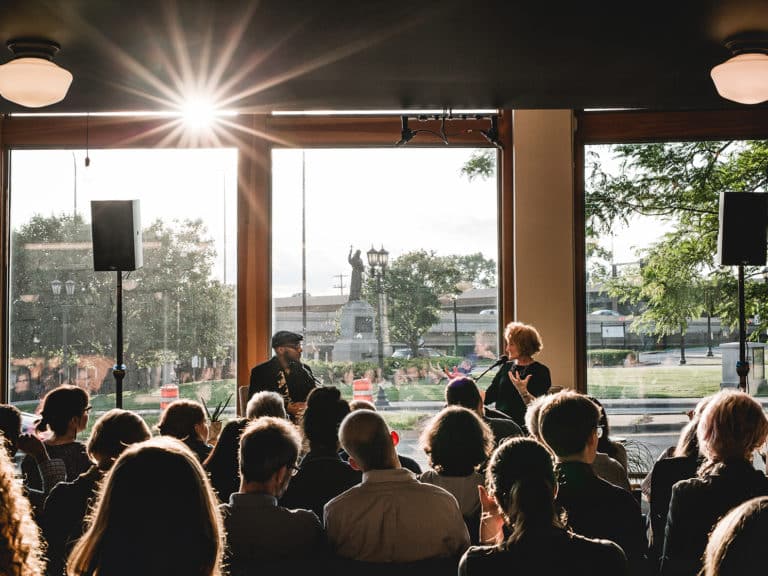No conversation we’ve ever done has been more beloved than this one. The Irish poet, theologian, and philosopher insisted on beauty as a human calling. He had a very Celtic, lifelong fascination with the inner landscape of our lives and with what he called “the invisible world” that is constantly intertwining what we can know and see. This was one of the last interviews he gave before his unexpected death in 2008. But John O’Donohue’s voice and writings continue to bring ancient mystical wisdom to modern confusions and longings.
Beauty
Featured Items
View
- List View
- Standard View
- Grid View
12 Results
Filters
In this all-new episode, Krista engages biomimicry pioneer Janine Benyus in a second, urgent conversation, alongside creative biomimicry practitioner Azita Ardakani Walton. Together they trace precise guidance and applied wisdom from the natural world for the civilizational callings before us now.
What does nature have to teach us about healing from trauma? And how might those of us aspiring to good and generative lives start to function like an ecosystem rather than a collection of separate, siloed projects? We are in kinship. How to make that real — and in making it real, make it more of an offering to the whole wide world?
Krista, Azita, and Janine spoke at the January 2024 gathering of visionaries, activists, and creatives where Krista also drew out Lyndsey Stonebridge and Lucas Johnson for the recent episode on Hannah Arendt. We’re excited to bring you back into that room.
March 23, 2023
Janine Benyus
Biomimicry, an Operating Manual for Earthlings
There is a quiet, redemptive story of our time in this conversation — a radical way of approaching the gravest of our problems by attending to how original vitality functions. Biomimicry takes the natural world as mentor and teacher — for, as Janine Benyus puts it, “we are surrounded by geniuses.” Nature solves problems and performs what appear to us as miracles in every second, all around: running on sunlight, fitting form to function, recycling everything, relentlessly “creating conditions conducive to life.” Janine launched this way of seeing and imagining as a field with her 1997 book, Biomimicry: Innovation Inspired by Nature. Today she teaches and consults with all kinds of projects and organizations, including major corporations, as you’ll hear.
Welcome to this unfolding parallel universe in our midst, which might just shift the way you see almost everything about our possible futures.
This conversation was part of The Great Northern Festival, a celebration of Minnesota’s signature cold, creative winters.
One of the most fascinating developments of our time is that human qualities we have understood in terms of virtue — experiences we’ve called spiritual — are now being taken seriously by science as intelligence — as elements of human wholeness. Dacher Keltner and his Greater Good Science Center at Berkeley have been pivotal in this emergence. From the earliest years of his career, he investigated how emotions are coded in the muscles of our faces, and how they serve as “moral sensory systems.” He was called on as Emojis evolved; he consulted on Pete Docter’s groundbreaking movie Inside Out.
All of this, as Dacher sees it now, led him deeper and deeper into investigating the primary experience of awe in human life — moments when we have a sense of wonder, an experience of mystery, that transcends our understanding. These, it turns out, are as common in human life globally as they are measurably health-giving and immunity-boosting. They bring us together with others, again and again. They bring our nervous system and heartbeat and breath into sync — and even into sync with other bodies around us.
The ornithologist J. Drew Lanham is lyrical in the languages of science, humans, and birds. His celebrated books include The Home Place: Memoirs of a Colored Man’s Love Affair with Nature and a collection of poetry and meditations called Sparrow Envy: Field Guide to Birds and Lesser Beasts. J. Drew Lanham’s way of seeing and hearing and noticing the present and the history that birds traverse — through our backyards and beyond — is a revelatory way to be present to the world and to life in our time.
This conversation took place in partnership with The Great Northern.
No conversation we’ve ever done has been more beloved than this one. The Irish poet, theologian, and philosopher insisted on beauty as a human calling. He had a very Celtic, lifelong fascination with the inner landscape of our lives and with what he called “the invisible world” that is constantly intertwining what we can know and see. This was one of the last interviews he gave before his unexpected death in 2008. But John O’Donohue’s voice and writings continue to bring ancient mystical wisdom to modern confusions and longings.
The esteemed writer Jane Hirshfield has been a Zen monk and a visiting artist among neuroscientists. She has said this: “It’s my nature to question, to look at the opposite side. I believe that the best writing also does this … It tells us that where there is sorrow, there will be joy; where there is joy, there will be sorrow … The acknowledgement of the fully complex scope of being is why good art thrills … Acknowledging the fullness of things,” she insists, “is our human task.” And that’s the ground Krista meanders with Jane Hirshfield in this conversation: the fullness of things — through the interplay of Zen and science, poetry and ecology — in her life and writing.
We are digging into the archives to celebrate some of the conversations listeners have loved the most and that have shaped this project. Béla Fleck is one of the greatest living banjo players. He’s followed what many experience as this quintessential American roots instrument back to its roots in Africa, and he’s taken it where no banjo has gone before. Abigail Washburn is a celebrated banjo player and singer, both in English and Chinese. These two are partners in music and in life — recovering something ancient and deeply American all at once, bringing both beauty and refreshment to what they play and how they live.
To reassert the liveliness of ordinary things, precisely in the face of what is hardest and most broken in life and society — this has been Michael Longley’s gift as one of Northern Ireland’s foremost living poets. He is known, in part, as a poet of “the Troubles” — the violent 30-year conflict between Protestants and Catholics, English and Irish. And he is a gentle voice for all of us now, wise and winsome about the everyday, never-finished work of social healing.
“Having tasted beauty at the heart of the world, we hunger for more.” These are words from Nobel physicist Frank Wilczek in his book, A Beautiful Question. It’s a winsome, joyful meditation on the question: Do cosmic realities embody beautiful ideas? — probing the world, by way of science, as a work of art. He reminds us that time and space, mystery and order, are so much stranger and more generous than we can comprehend. He’s now written a wonderful new book, Fundamentals: Ten Keys to Reality.
Writer and photographer Teju Cole says he is “intrigued by the continuity of places, by the singing line that connects them all.” He attends to the border, overlap and interplay of things — from Brahms and Baldwin to daily technologies like Google. To delve into his mind and his multiple arts is to meet this world with creative raw materials for enduring truth and quiet hope.
A philosopher’s questioning and a scientist’s eye shape Enrique Martínez Celaya’s original approach to art and to life. A world-renowned painter who trained as a physicist, he’s fascinated by the deeper order that “whispers” beneath the surface of things. Works of art that endure, he says, possess their own form of consciousness. And a quiet life of purpose is a particular form of prophecy.
The philosopher Simone Weil defined prayer as “absolutely unmixed attention.” The artist Ann Hamilton embodies this notion in her sweeping works of art that bring all the senses together. She uses her hands to create installations that are both visually astounding and surprisingly intimate, and meet a longing many of us share, as she puts it, to be alone together.
The Pause
Join our constellation of listening and living.
The Pause is our seasonal Saturday morning ritual of a newsletter. Replenishment and invigoration in your inbox. Wisdom to take into your week. And when you sign up, you’ll receive ongoing, advance invitations and news on all things On Being.
Search results for “”
View
- List View
- Standard View
- Grid View
Filters
